Beautiful DIY Furniture Makeovers to Match Your Decor
Are you tired of looking at the same old furniture day in and day out? Do you wish you could breathe new life into your home without breaking the bank? Well, you're in luck! DIY furniture makeovers are not just a trend; they are a fantastic way to express your creativity and personalize your space. Imagine transforming a drab, outdated piece into a stunning focal point that complements your decor perfectly. The best part? You don't have to be a professional to achieve jaw-dropping results!
In this article, we will explore a treasure trove of creative and inspiring ideas for transforming your furniture through DIY makeovers. From selecting the right pieces to mastering essential techniques, we will guide you every step of the way. So grab your tools, roll up your sleeves, and let's dive into the wonderful world of DIY furniture makeovers that will leave your guests in awe!
When it comes to DIY furniture makeovers, the first step is choosing the right pieces to work with. Think of it like dating; you want to find that perfect match that complements your style. Consider factors such as size, style, and material. For instance, a sturdy wooden table might be a great candidate for a rustic finish, while a sleek metal chair could shine with a modern paint job.
Before you start, take a good look around your home. What pieces are you currently using? Which ones could use a little love? It’s also worth checking out thrift stores or garage sales for hidden gems. Remember, the goal is to find furniture that not only fits your space but also resonates with your personal style.
Now that you've selected your furniture, it's time to gather your arsenal of tools and materials. Think of this as preparing for a big adventure; you wouldn't set out without the right gear, would you? Here’s a quick rundown of some essentials:
- Sandpaper: For smoothing surfaces and prepping for paint.
- Paintbrushes and Rollers: For applying your chosen paint.
- Primer: To ensure your paint adheres well.
- Upholstery Stapler: If you're reupholstering.
- Measuring Tape: To ensure everything fits just right.
Having these tools ready will make your DIY journey much smoother and more enjoyable. Plus, it’s always a good idea to have some extra supplies on hand, just in case inspiration strikes mid-project!
One of the most transformative aspects of a DIY furniture makeover is painting. It’s like giving your furniture a brand-new wardrobe! There are various painting techniques you can explore, each offering unique results. For instance, spray painting can provide a smooth finish, while brush techniques allow for more texture and character.
Don’t forget about color selection! Choosing the right color can set the mood for your entire space. Whether you prefer bold, vibrant hues or soft, muted tones, the right paint can make all the difference. Think of it as dressing your furniture for a special occasion!
Not all paints are created equal, and understanding the different types is crucial for a successful makeover. Here’s a brief overview of some popular options:
| Type of Paint | Best For | Durability |
|---|---|---|
| Chalk Paint | Vintage and rustic looks | Moderate |
| Acrylic Paint | General furniture | High |
| Spray Paint | Metal and intricate details | High |
Choosing the right paint will ensure your furniture not only looks great but also stands the test of time!
Before you dive into painting, remember that prep work is key. Think of it as laying the foundation for a sturdy house. Proper preparation includes:
- Sanding: Smooth out rough spots and remove old paint.
- Priming: Create a base for the paint to adhere to.
- Cleaning: Remove dust and grease to ensure a flawless finish.
Taking the time to prepare your furniture will pay off in the end, resulting in a professional-looking finish that you can be proud of!
Upholstering furniture can breathe new life into old pieces, making them feel fresh and inviting. Whether you're looking to reupholster a chair, sofa, or ottoman, the fabric you choose can dramatically change the vibe of your space. Think about patterns, textures, and colors that will complement your existing decor.
Don’t shy away from bold prints or vibrant colors; they can make your furniture pop and become a conversation starter in your home!
Once your furniture is painted and/or reupholstered, it’s time to add those unique finishing touches that will elevate your DIY project. Consider adding new hardware, such as knobs or handles, to give your piece a modern twist. Stencils can also be a fun way to add intricate designs or personal messages that reflect your style.
Accessories play a significant role in enhancing the overall look of your furniture. Think about decorative items like cushions, throws, or table decor. These elements can tie your room together and create a cohesive look. Just like a great outfit needs the right accessories, your furniture deserves the same treatment!
To ensure your hard work pays off, proper maintenance of your DIY furniture is essential. Regular cleaning, avoiding direct sunlight, and using coasters can help keep your pieces looking fresh and beautiful for years to come. Think of it as nurturing a plant; with the right care, it will thrive!
Q: How do I choose the right furniture for a DIY makeover?
A: Look for pieces that are sturdy and fit your style. Consider size and material to ensure they complement your decor.
Q: What tools do I need for a furniture makeover?
A: Essential tools include sandpaper, paintbrushes, primer, and a measuring tape. Having a staple gun is handy for upholstery projects.
Q: How can I make my furniture last after a makeover?
A: Regular maintenance, such as cleaning and avoiding direct sunlight, will help keep your furniture looking great for years.

Choosing the Right Furniture
When it comes to transforming your space with DIY furniture makeovers, the first step is to choose the right pieces. This might sound simple, but selecting the perfect furniture involves a bit of thought and consideration. You want to ensure that the items you pick not only fit your style but also harmonize with your existing decor. So, what should you look for? Let's break it down.
First, consider the size of the furniture. If you're working with a small space, oversized furniture can make the room feel cramped and uncomfortable. On the flip side, tiny pieces in a large room can get lost and seem out of place. Measure your space and visualize how the furniture will fit in. A great tip is to use painter's tape to outline the dimensions of the furniture on the floor. This way, you can see exactly how much room it will take up and adjust accordingly.
Next up is the style. Your furniture should reflect your personal taste and the overall theme of your home. Are you leaning towards a modern aesthetic with sleek lines, or do you prefer the warmth of rustic charm? Maybe you're a fan of vintage pieces that tell a story. Whatever your preference, make sure your chosen furniture complements the existing elements in your room. For instance, if your decor is mostly minimalist, a heavily ornate piece might clash rather than shine.
Don't forget about the material of the furniture. Different materials not only offer various aesthetics but also come with their own set of maintenance requirements. Wood, for example, can add warmth and character, but it may require regular polishing to keep it looking great. On the other hand, metal pieces can provide a contemporary edge and are often easier to clean. Think about your lifestyle and how much wear and tear your furniture will endure. If you have kids or pets, durable materials might be your best bet.
Finally, consider the potential for transformation. Look for pieces that have good bones and can be easily updated with a little creativity. A simple wooden chair can become a stunning focal point with a fresh coat of paint and new upholstery. A drab dresser can be transformed into a chic statement piece with some new knobs and a splash of color. Keep an eye out for furniture that excites your imagination and sparks your creativity.
In summary, when choosing the right furniture for your DIY makeover, remember to pay attention to size, style, material, and the potential for transformation. These factors will not only help you find pieces that fit your decor but also inspire you to create something truly unique and beautiful.
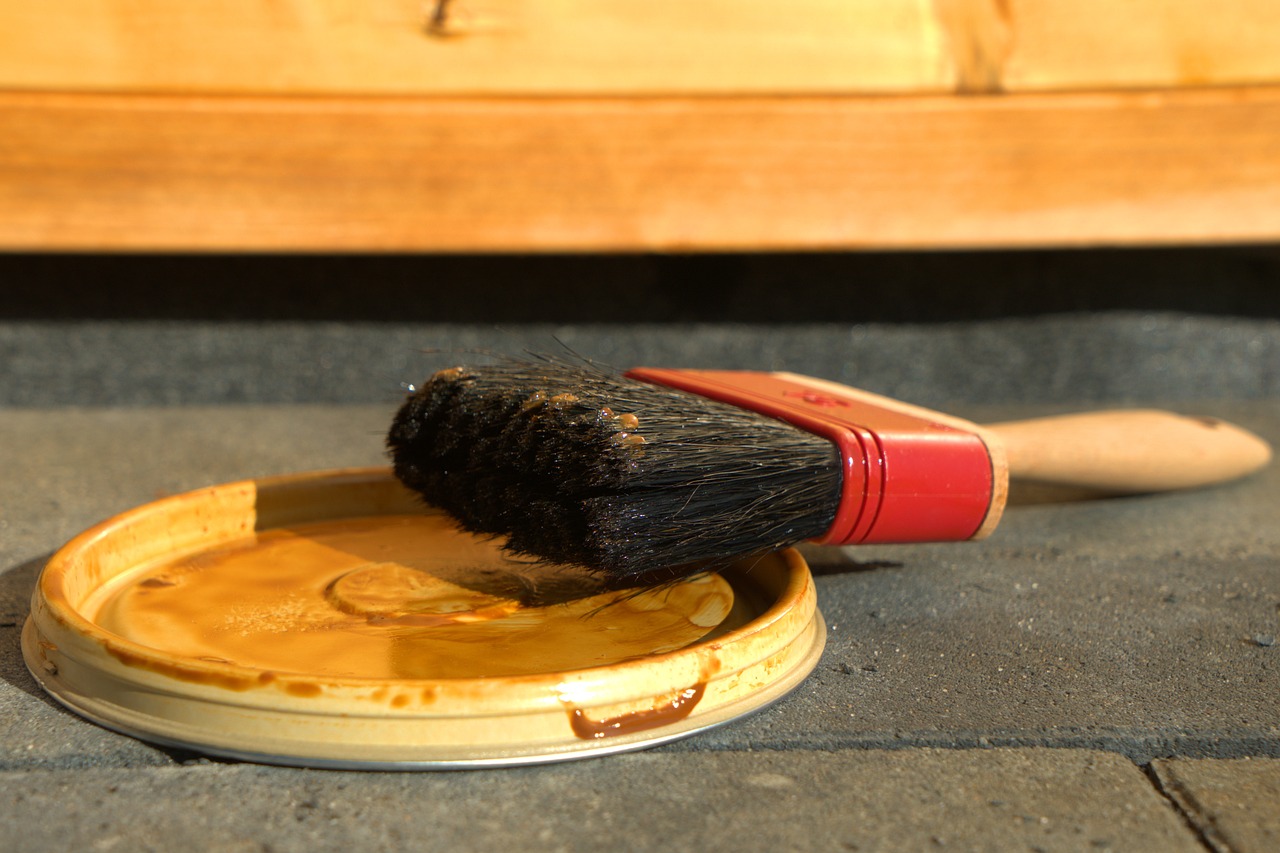
Essential Tools and Materials
Before diving into your DIY furniture makeover adventure, it's crucial to gather the right tools and materials. Think of this phase as assembling your superhero toolkit; each item plays a vital role in transforming your ordinary pieces into stunning focal points in your home. So, let's get you equipped!
First and foremost, consider the basic tools you'll need. A good quality paintbrush and roller are essential for applying paint smoothly. If you’re opting for spray paint, a spray gun can make your life a lot easier, especially for larger pieces. Don’t forget a sander to prep your surfaces—this is your secret weapon for achieving that flawless finish!
In addition to the tools, you'll also need to stock up on materials. Here’s a quick rundown of some must-have items:
- Primer: This helps the paint adhere better and provides a uniform surface.
- Paint: Choose the right type based on your project—chalk paint, acrylic, or even spray paint.
- Fabric: If you're reupholstering, select a durable fabric that matches your decor.
- Hardware: New knobs or handles can completely change the look of your furniture.
Now, while it's tempting to rush out and buy everything, take a moment to assess what you already have at home. You might be surprised by the hidden treasures lurking in your garage or craft drawer! For instance, old brushes, leftover paint, or even fabric scraps can be repurposed for your project.
As you gather your materials, keep in mind that quality matters. Investing in good tools will not only make your job easier but also ensure a more professional finish. So, don’t skimp on those essential items. Think of it as a long-term investment in your home’s beauty!
Lastly, consider creating a DIY workspace. Having a designated area to work on your projects can make the process smoother and more enjoyable. Set up a table, lay down some protective covering, and organize your tools and materials within arm's reach. This will help you stay focused and keep the creative juices flowing!
In summary, equipping yourself with the right tools and materials is a crucial step in your DIY furniture makeover journey. With the right preparation, you'll be ready to tackle any project that comes your way, transforming your furniture into beautiful pieces that reflect your unique style.
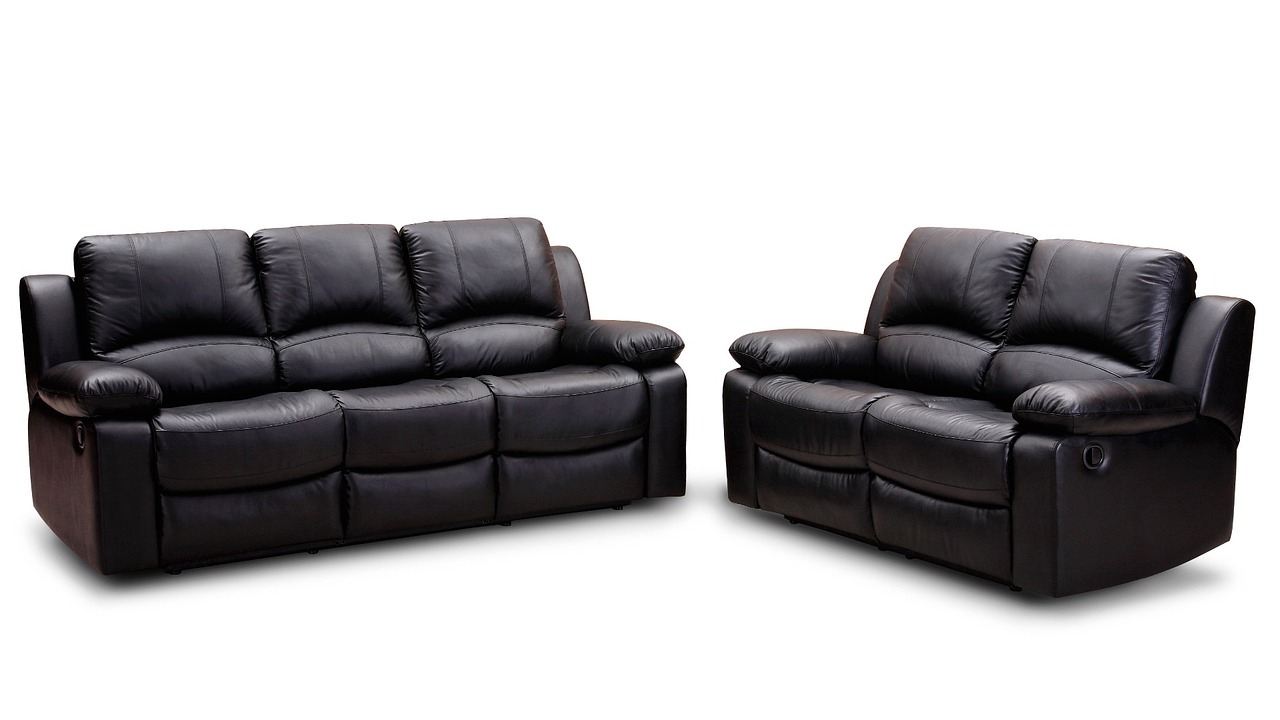
Painting Techniques
Transforming your furniture with paint is like giving it a brand new wardrobe; it can completely change its personality! When you think about , consider the different methods that can help you achieve that stunning finish. Whether you're a beginner or a seasoned DIY enthusiast, there are various approaches to painting that can suit your style and skill level.
One of the most popular methods is spray painting. This technique is perfect for achieving a smooth and even coat, especially on intricate or detailed surfaces. Just imagine how effortlessly a can of spray paint can cover those hard-to-reach corners! However, it's crucial to use it in a well-ventilated area and to wear a mask to avoid inhaling fumes. If you prefer a more hands-on approach, traditional brush painting offers greater control, allowing you to apply paint precisely where you want it. This method is particularly effective for larger pieces or when you're working with textured surfaces.
When it comes to color selection, think about the mood you want to create in your space. Light colors can make a room feel airy and spacious, while dark shades can add a touch of elegance and coziness. Don't be afraid to experiment with bold colors or even a fun ombre effect to add depth and dimension to your furniture.
Here are a few techniques to consider when painting your furniture:
- Distressing: This technique involves sanding down certain areas of the painted surface to reveal the wood underneath, giving your furniture a charming, vintage look.
- Color Washing: A diluted paint wash can create a soft, translucent effect, perfect for adding a subtle hint of color.
- Stenciling: Use stencils to add intricate designs or patterns to your furniture, making it truly unique.
Remember, the key to a successful paint job is preparation. Always ensure your furniture is clean and free from dust before you start applying paint. A well-prepared surface not only helps the paint adhere better but also results in a smoother finish. So, gather your brushes, choose your colors, and get ready to unleash your creativity!

Choosing the Right Paint
When it comes to giving your furniture a stunning makeover, is crucial. Not all paints are created equal, and selecting the perfect one can make a world of difference in the final look and durability of your project. To start, you’ll want to consider the type of furniture you’re working with, as well as the environment it will be placed in. For example, a coffee table that sees a lot of action might need a more durable finish than a decorative side table that sits in a corner.
There are several types of paint to choose from, each with its own unique qualities. Here’s a quick rundown:
- Chalk Paint: This is a favorite among DIY enthusiasts for its matte finish and ease of use. It adheres well to most surfaces without the need for extensive prep work. Chalk paint is perfect for achieving that shabby chic look.
- Acrylic Paint: Known for its vibrant colors and versatility, acrylic paint is great for furniture that requires a glossy finish. It’s also water-based, making cleanup a breeze.
- Spray Paint: If you’re looking for a quick and even coat, spray paint is your go-to. It’s ideal for intricate pieces with lots of details, but it requires some practice to avoid drips and uneven coverage.
When selecting paint, don't forget to consider the color. The right color can completely transform a piece of furniture and enhance your overall decor. Think about the color palette of your room and choose shades that complement or contrast beautifully with your existing decor. Additionally, consider the finish—do you want a matte, satin, or glossy look? Each finish will give your furniture a different vibe, so choose wisely!
Finally, always check for durability and safety. If you’re working on a piece that will be used frequently or by children, make sure to choose paint that is non-toxic and has a strong protective finish. Some paints come with built-in sealers, while others may require an additional topcoat for protection. Investing a little time in choosing the right paint will pay off in the long run, keeping your furniture looking fresh and fabulous.

Prep Work for Painting
Before you dive into the exciting world of painting your furniture, it’s crucial to understand that proper preparation is the foundation of a successful makeover. Think of it as setting the stage for a performance; without a solid backdrop, even the most talented actors can falter. So, what does this prep work entail? Let’s break it down!
First and foremost, sanding is your best friend. This step involves smoothing out the surface of your furniture, removing any old paint or finish, and ensuring that the new paint adheres properly. Use a medium-grit sandpaper (around 120-grit) for initial sanding, followed by a fine-grit (220-grit) for a smooth finish. Be sure to sand in the direction of the grain to avoid scratches that could show through your new paint. After sanding, wipe down the surface with a damp cloth to remove any dust particles that might interfere with the paint.
Next up is priming. This step is often overlooked, but it plays a vital role in ensuring that your paint job looks professional and lasts longer. A good primer not only helps the paint stick but also blocks stains and prevents bleed-through from the old finish. If you’re working with a particularly shiny or dark piece of furniture, a primer can help achieve a more vibrant color. Apply the primer with a brush or roller, and don’t forget to let it dry completely before moving on to the next step.
Lastly, cleaning your furniture is essential. After sanding and priming, you might think you’re done, but dust and grease can still linger. Use a mild detergent solution to clean the surface thoroughly, ensuring that it’s free of any residues. Once cleaned, rinse with water and let it dry completely. Trust me, taking these extra steps will pay off in the long run by giving you a flawless finish!
To summarize, here’s a quick checklist of the prep work you should complete before painting:
- Sanding: Smooth out the surface and remove old finishes.
- Priming: Apply a good-quality primer to help the paint adhere.
- Cleaning: Remove dust and grease to ensure a clean painting surface.
By investing time in these preparatory steps, you’re setting yourself up for a stunning transformation that not only looks great but also stands the test of time. So, grab your tools and get ready to unleash your creativity!
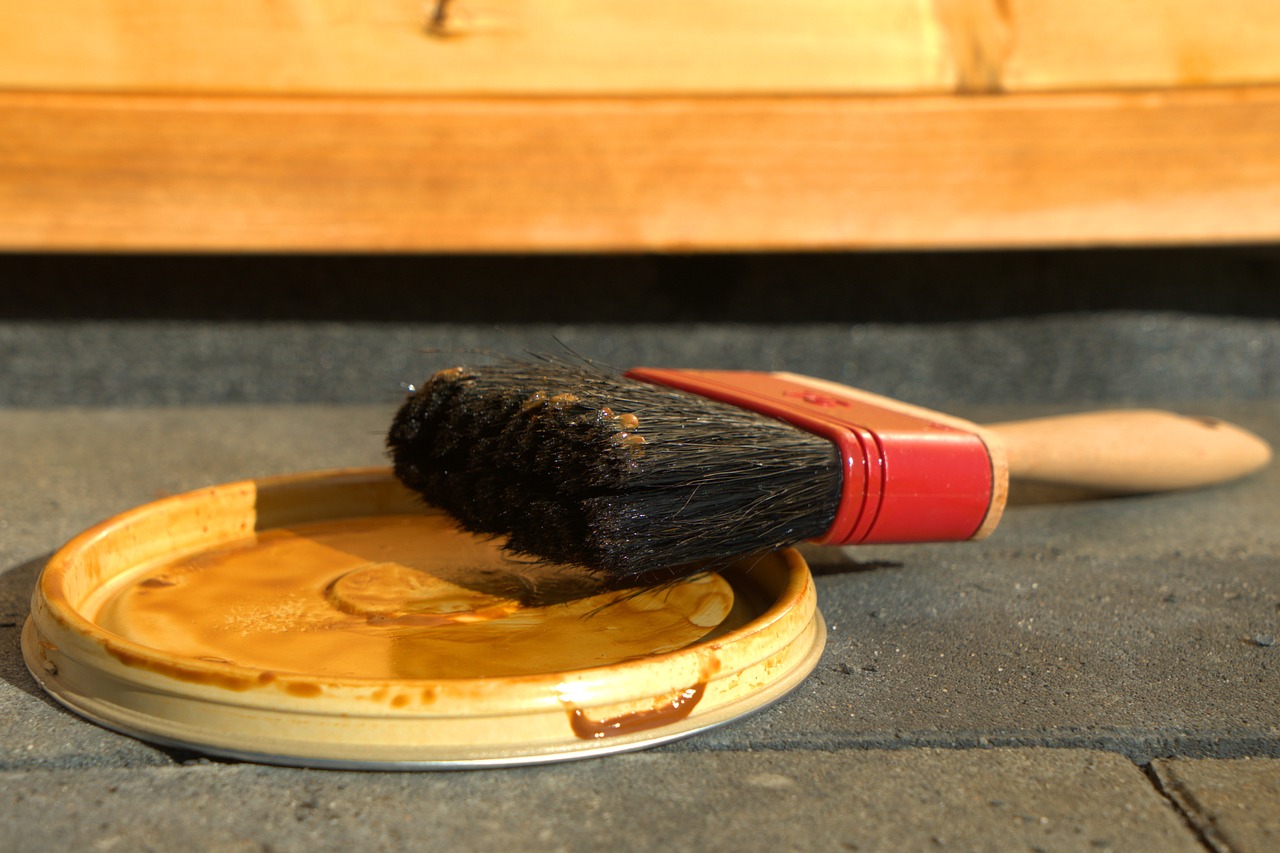
Upholstery and Fabric Choices
Upholstering furniture can be a transformative experience, breathing new life into tired pieces and allowing you to create a style that resonates with your personal taste. When it comes to choosing upholstery and fabric, the options are nearly limitless, which can be both exciting and overwhelming. So, how do you decide what’s right for your project? First, consider the functionality of the furniture. If it’s a high-traffic area, you’ll want to select durable fabrics that can withstand wear and tear. Fabrics like canvas, denim, or microfiber are excellent choices for their resilience.
Next, think about the style you wish to achieve. Are you going for a cozy, rustic vibe or a sleek, modern look? For a farmhouse feel, consider using linen or tweed, while velvet or silk can add a touch of luxury to more contemporary settings. Remember, the texture of the fabric can also play a significant role in the overall aesthetic. A soft, plush fabric can make a piece feel inviting, while a smooth finish can lend a more polished appearance.
One effective way to visualize your choices is by creating a mood board. Collect fabric swatches, paint samples, and even pictures of furniture styles that inspire you. This will not only help you see how different elements work together but also assist in making a confident decision. If you’re feeling adventurous, don’t shy away from mixing patterns! Combining a bold print with a subtle one can create a dynamic and personalized look that truly reflects your style.
When selecting fabric, consider the maintenance required. Some fabrics are easier to clean than others, which is crucial if you have kids or pets. For instance, fabrics labeled as stain-resistant or washable will save you a lot of headaches in the long run. Additionally, always check the fabric’s lightfastness rating if your furniture will be placed in direct sunlight, as some materials can fade over time.
Lastly, don’t forget about the color palette. Choose colors that complement your existing decor while also considering the mood you want to create in your space. Neutral tones can serve as a versatile backdrop, while vibrant hues can make a bold statement. If you’re unsure about color, remember that you can always start with a neutral base and add pops of color through accessories like cushions or throws.
In conclusion, selecting the right upholstery and fabric choices for your furniture makeover is all about finding the perfect balance between style, durability, and maintenance. With careful consideration and a little creativity, you can transform your furniture into stunning pieces that not only enhance your decor but also tell your unique story.
- What is the best fabric for upholstery? The best fabric depends on the use of the furniture. Durable options like canvas or microfiber are great for high-traffic areas, while velvet or silk can add elegance to less-used pieces.
- Can I mix different fabric patterns? Yes! Mixing patterns can create a unique and personalized look. Just ensure that the colors complement each other.
- How do I maintain upholstered furniture? Regular vacuuming and spot cleaning are essential. Always check the cleaning instructions for your specific fabric.
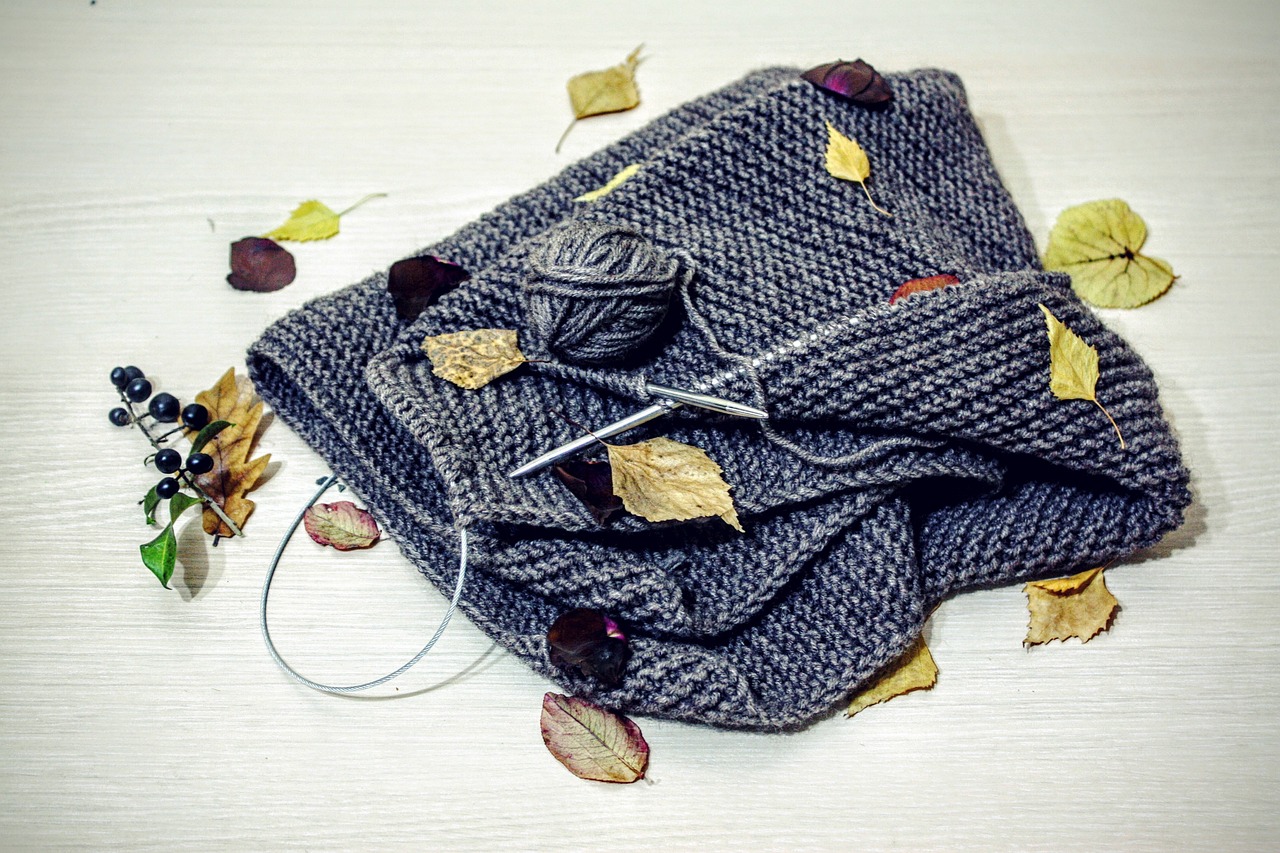
Creative Finishing Touches
When it comes to DIY furniture makeovers, the finishing touches can make all the difference. Think of these touches as the icing on the cake—without them, your piece might look good, but with them, it can truly shine! From hardware upgrades to decorative elements, adding unique features can elevate your furniture from ordinary to extraordinary.
One of the simplest ways to enhance your furniture is through hardware changes. Swapping out old knobs and handles for something more stylish can completely transform a piece. Imagine replacing basic drawer pulls with vintage brass handles or sleek modern ones. The right hardware can add a touch of elegance or a pop of personality, depending on your decor style. Consider browsing local thrift stores or online marketplaces for unique finds that can add character to your furniture.
Another creative avenue to explore is the use of stencils or decals. Whether you want to add a subtle pattern or a bold graphic, stenciling can bring a whole new dimension to your furniture. You can use stencils to create intricate designs on tabletops or even to add quotes or sayings that resonate with you. This is a fantastic way to make your furniture a reflection of your personality and style.
Don't forget about decorative elements like cushions, throws, and table decor. These accessories can tie your entire room together and make your furniture feel more inviting. For instance, a beautifully patterned throw can add a splash of color to a neutral sofa, while a few well-placed cushions can create a cozy nook that beckons you to sit down and relax. When selecting accessories, think about the color palette and style of your room to ensure everything complements each other seamlessly.
Additionally, consider incorporating natural elements into your furniture decor. Items like plants or flowers can breathe life into your space and create a warm, inviting atmosphere. A small potted plant on a side table or a vase of fresh flowers can add a touch of freshness that enhances the overall aesthetic of your furniture.
Finally, if you're feeling particularly adventurous, you might want to try your hand at creating custom art pieces to display alongside your newly revamped furniture. This could be anything from a simple framed print that matches your color scheme to a bold canvas that makes a statement. Art adds personality and can serve as a conversation starter when guests come over.
In summary, the creative finishing touches you choose can significantly impact the overall look and feel of your DIY furniture. Whether it’s through hardware upgrades, stenciling, decorative accessories, or natural elements, these details will help your furniture stand out and reflect your unique style. So, get creative and have fun with it—your furniture makeover is just waiting for that perfect finishing touch!
Q: What are some easy ways to add finishing touches to my furniture?
A: You can easily enhance your furniture by changing hardware, adding decorative cushions or throws, using stencils for unique designs, and incorporating plants or art pieces that reflect your style.
Q: How do I choose the right hardware for my furniture?
A: Consider the style of your furniture and the overall theme of your decor. For a modern look, opt for sleek and minimalistic hardware. For a vintage feel, look for ornate or antique-style pieces.
Q: Can I use stencils on any type of furniture?
A: Yes, stencils can be used on various surfaces, including wood, metal, and even fabric. Just ensure you use the appropriate paint and technique for the material you are working with.
Q: How can I maintain the finishing touches on my furniture?
A: Regular cleaning and care are essential. Use gentle cleaners to avoid damaging paint or finishes, and periodically check hardware to ensure it remains secure. For fabric accessories, follow care instructions to keep them looking fresh.
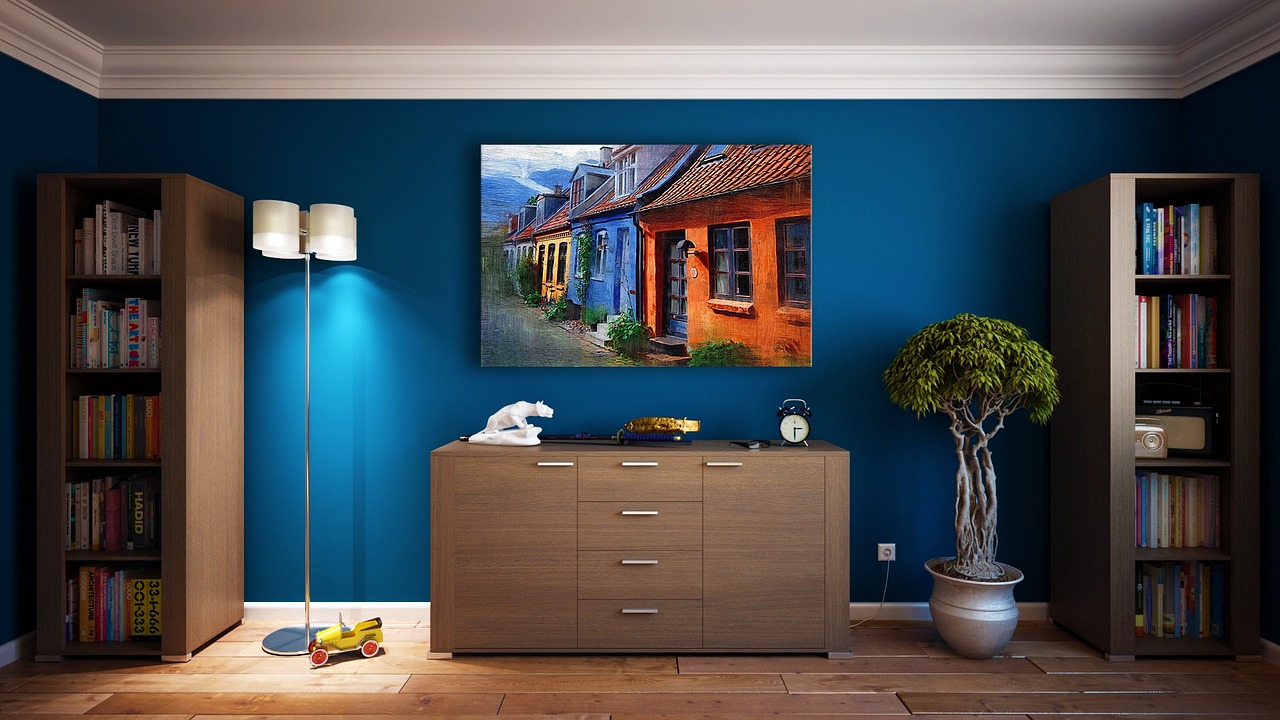
Incorporating Accessories
When it comes to DIY furniture makeovers, the magic often lies in the details. Accessories can transform a simple piece of furniture into a stunning focal point in your home. Imagine a plain wooden chair that suddenly becomes a statement piece with the right cushions and throws. Accessories not only enhance the aesthetic appeal of your furniture but also reflect your personal style, making your space feel uniquely yours.
One of the first steps in incorporating accessories is to consider the overall theme of your decor. Are you going for a bohemian vibe, a sleek modern look, or perhaps a cozy farmhouse feel? Each style has its own set of accessories that can complement your furniture. For instance, if you have a vintage dresser, adding antique knobs or decorative mirrors can elevate its charm. On the other hand, a minimalist table might benefit from geometric vases or monochromatic decor items.
Here are a few ideas to get you started:
- Cushions and Throws: These are not just for comfort; they add color, texture, and warmth to your furniture. Choose patterns and fabrics that resonate with your overall decor theme.
- Decorative Trays: A stylish tray on your coffee table can organize items while adding a layer of sophistication. Consider materials like wood, metal, or even ceramic to match your furniture's finish.
- Artwork and Wall Decor: Don't forget the walls! A well-placed piece of art can tie the room together and make your furniture pop.
In addition to these accessories, think about the functionality they bring. For example, a chic basket can serve as both storage and decor, helping to keep your space tidy while adding a touch of style. Similarly, lighting plays a critical role; a beautiful lamp can not only illuminate your space but also act as a decorative element that enhances the overall look of your furniture.
Remember, the key to successfully incorporating accessories is to achieve a balance. Too many accessories can create a cluttered look, while too few can make a space feel empty. Try to find a sweet spot where your furniture feels complete but not overwhelming. A good rule of thumb is to start with a few key pieces and gradually add more until you reach a harmonious look.
Lastly, don’t forget to change things up from time to time. Seasonal decor can breathe new life into your furniture and keep your space feeling fresh and inviting. Whether it’s swapping out cushions for a lighter fabric in the summer or adding festive touches during the holidays, your furniture can adapt and evolve with your accessories, ensuring your home always feels in tune with the season.
Q: How do I choose the right accessories for my furniture?
A: Start by identifying your decor style and color palette. Choose accessories that complement those elements while adding personal touches.
Q: Can I mix different styles of accessories?
A: Absolutely! Mixing styles can create an eclectic and interesting look. Just ensure that there is a common thread, like color or material, that ties them together.
Q: How often should I update my accessories?
A: There's no set rule, but consider changing your accessories seasonally or whenever you feel your space needs a refresh.
Q: What are some affordable options for accessorizing?
A: Thrift stores, flea markets, and DIY projects are great ways to find unique and affordable accessories that can enhance your furniture.
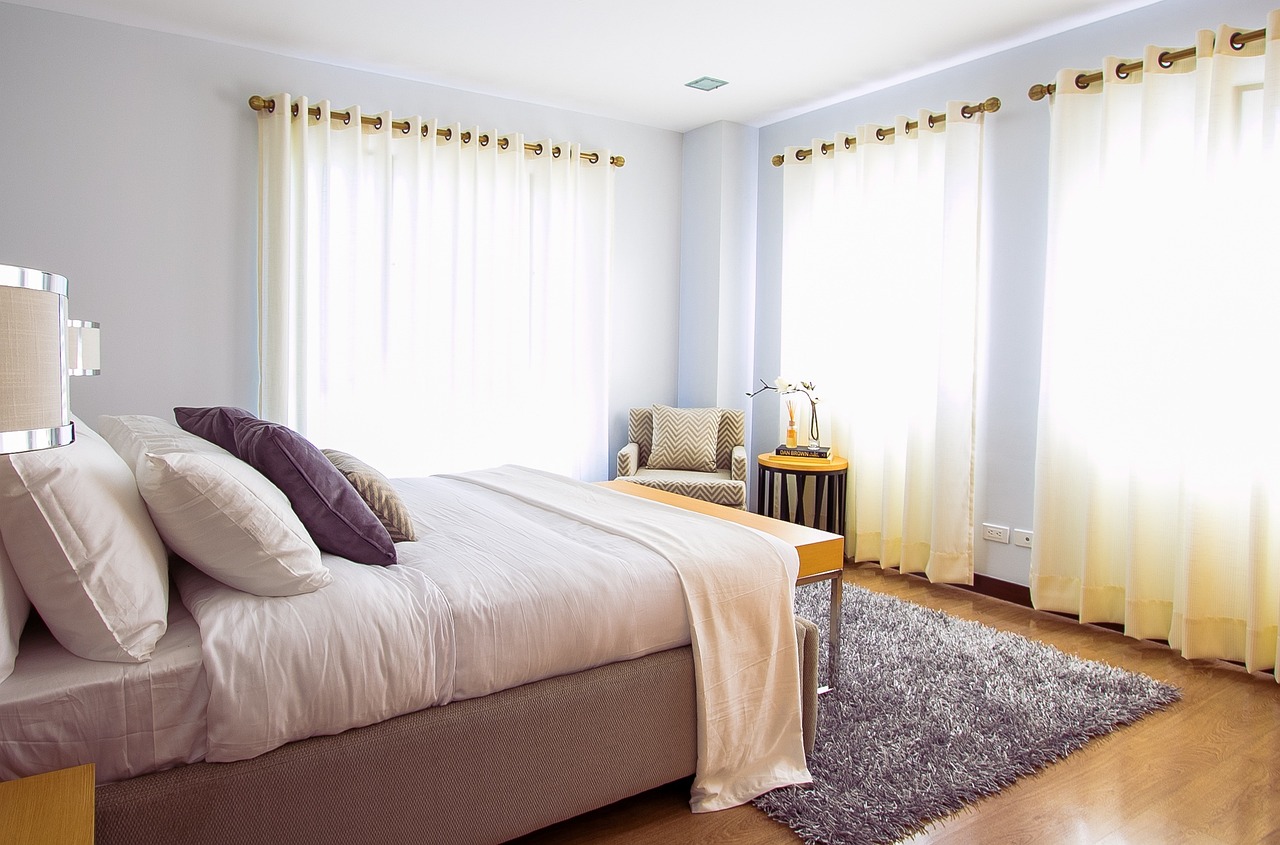
Maintaining Your Makeover
Congratulations on completing your stunning DIY furniture makeover! Now that you've transformed your beloved pieces into beautiful works of art, it's vital to ensure that they remain in top condition for years to come. Just like a well-tended garden, your furniture needs the right care to thrive. So, how do you keep your newly revamped treasures looking fresh and fabulous? Let's dive into some essential maintenance tips!
First and foremost, regular cleaning is key. Dust and dirt can accumulate quickly, dulling the finish and making your furniture appear worn. Use a soft, lint-free cloth to gently wipe down surfaces. For painted or varnished furniture, a damp cloth can work wonders, but be sure to dry it off immediately to prevent moisture damage. Upholstered pieces, on the other hand, may require a vacuum with an upholstery attachment to remove debris from the fabric's fibers. Remember, a little maintenance goes a long way!
Next, consider the environment where your furniture resides. Direct sunlight can fade colors and materials over time, so it’s wise to position your pieces away from harsh light sources. If that’s not possible, think about using sheer curtains or UV-protective films on windows to minimize sun exposure. Similarly, humidity can wreak havoc on wood furniture, causing it to warp or crack. Aim to keep your home’s humidity levels between 30-50% for optimal conditions.
Another crucial aspect of maintaining your furniture makeover is to handle wear and tear promptly. If you notice scratches or dents, address them quickly to prevent further damage. For painted surfaces, a touch-up with the same paint can often do the trick. If you have upholstered furniture, consider using a fabric repair kit to mend small tears or snags. Keeping a small stash of touch-up paint and repair supplies handy can save you from larger problems down the road.
Finally, don’t forget about seasonal maintenance. Just as you would change your wardrobe with the seasons, your furniture may also benefit from a little seasonal TLC. In the spring, give everything a thorough clean and inspect for any damage that may have occurred during the winter months. During the fall, consider applying a protective sealant to outdoor furniture or refreshing upholstery with seasonal colors and textures to keep things feeling fresh and inviting.
In summary, maintaining your DIY furniture makeover is all about being proactive. Regular cleaning, protecting your pieces from environmental factors, addressing damage promptly, and performing seasonal upkeep will ensure that your furniture continues to shine and serve you well. After all, your hard work deserves to be celebrated and enjoyed!
Here are some common questions and answers that can help you further with your DIY furniture maintenance:
- How often should I clean my furniture? Aim to dust and clean surfaces at least once a week, while deeper cleaning can be done monthly.
- Can I use regular household cleaners on my painted furniture? It's best to avoid harsh chemicals; instead, opt for gentle cleaners that are safe for your furniture's finish.
- What can I do to prevent fading from sunlight? Position furniture away from direct sunlight or use protective window treatments.
- How do I repair scratches on wood furniture? For minor scratches, use a wood filler or a matching stain to blend the area.
Frequently Asked Questions
- What types of furniture are best for DIY makeovers?
When it comes to DIY makeovers, almost any piece of furniture can be transformed! However, older wooden furniture tends to work best due to its sturdiness and ability to hold paint and other finishes well. Think about items like dressers, chairs, and tables that have good bones but need a little TLC. Remember, the key is to choose pieces that resonate with your style!
- What tools do I need to start my DIY furniture project?
Before diving into your furniture makeover, gather some essential tools. You'll need a screwdriver, sander, paintbrushes, and perhaps a paint sprayer if you're feeling adventurous! Don't forget about safety gear like gloves and a mask, especially if you're working with paints or chemicals. Having the right tools can make all the difference in your project!
- How do I choose the right paint for my furniture?
Choosing the right paint is crucial for a successful makeover. For furniture, chalk paint is a popular choice because it provides a matte finish and adheres well without extensive prep work. If you're looking for something more durable, consider acrylic paints or spray paints designed for furniture. Always test a small area first to ensure you love the color and finish!
- What preparation is needed before painting furniture?
Preparation is half the battle! Start by cleaning your furniture thoroughly to remove any dust or grease. Then, sanding is essential to create a smooth surface for painting. If your piece has a glossy finish, priming may also be necessary to ensure the paint adheres properly. Taking these steps will help you achieve a flawless finish!
- Can I reupholster my furniture myself?
Absolutely! Reupholstering is a fantastic way to give new life to chairs and sofas. With some basic sewing skills and the right fabric, you can create a stunning new look. Just make sure to choose durable fabrics that can withstand everyday use. It’s like giving your furniture a whole new wardrobe!
- What finishing touches can I add to my DIY furniture?
Finishing touches can truly elevate your DIY project! Consider adding decorative hardware like knobs and handles, or using stencils to create unique patterns. Accessories like cushions and throws can also enhance the overall aesthetic. Think of these elements as the icing on the cake – they make everything look more polished and personalized!
- How do I maintain my newly made-over furniture?
To keep your DIY furniture looking fabulous, regular maintenance is key. Dust your pieces frequently and avoid using harsh chemicals that can damage the finish. If you used paint, consider applying a clear topcoat for extra protection. Just like a good pair of shoes, a little care goes a long way in preserving your investment!



















